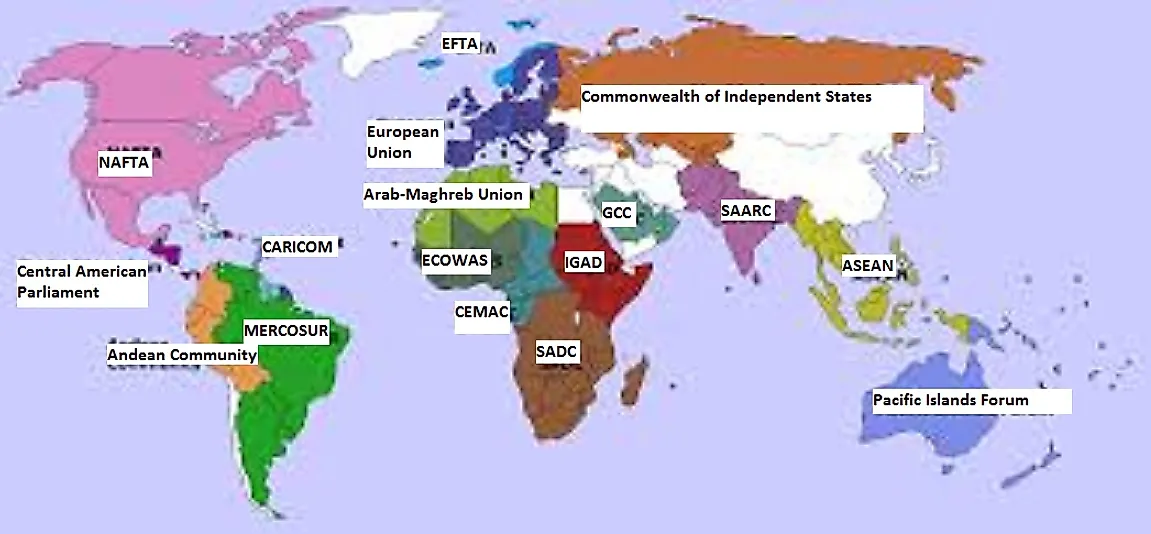What Is A Trade Bloc, And Why Are They Formed?

A trade bloc is a trade agreement among governments that are typically within a shared geographical region. The agreement is entered into as a means of protecting member nations from excessive imports of non-member nations. To encourage trade among member states, tariffs, taxes, and other trade barriers among them are often reduced or abolished. The most well-known examples of major trade blocs seen around the world today include the North American Free Trade Agreement (NAFTA), the Association of Southeast Asian Nations (ASEAN), the European Union (EU), the Southern Common Market (MERCOSUR), and the Southern African Development Community (SADC).
History of Trade Blocs
The Hanseatic League of the late 12th Century was one of the earliest documented trade blocs. It was implemented to protect the economic interests and political privileges of North European merchant associations. This trade bloc began to lose power in the late 16th Century due to increased trading of English, Roman, Dutch, and Ottoman Empire merchants. Its last formal meeting was in 1669 although it was not officially disbanded until 1871 with the creation of the German Empire. The existence of the German Empire was made possible by the implementation of a new trade bloc, the German Customs Union of 1834. The majority of the German states were members by 1866. This strong trade agreement led to the founding of the North German Confederation of 1867, which eventually became the German Empire in 1871. Other trade blocs did become prominent again until after World War II with the General Agreement on Tariffs and Trade (GATT) of 1948. This agreement originally had 23 member nations, and by 1994 it had grown to include 123 members. The GATT became the World Trade Organization in 1995. This trend toward trade blocs was seen in middle-income countries throughout the 1960’s, 1970’s, and after the fall of communism in the 1990’s. By the end of the 20th Century, over half of the world’s nations were members of some sort of a trade bloc agreement.
Advantages of Trade Blocs
Economists have identified 5 general advantages of establishing a trade bloc. The benefits include competition, market efficiency, trade effects, economies of scale, and foreign direct investment. Because trade blocs unite several international markets, the manufacturers, producers, and other businesses within member countries are also brought closer together. This puts them in direct competition with one another, which ultimately leads to increased efficiency as they each try to increase their profit margins. Because trade blocs eliminate trade barriers, previously expensive or unavailable products become available in new markets at affordable prices. This changes consumer demand and behavior as most customers turn to the lowest priced goods (known as trade effects). The manufacturers and businesses with the lowest prices are made more successful and able to increase production, resulting in market efficiency. As these economies become stronger, they encourage foreign direct investment.
Disadvantages of Trade Blocs
Despite the inherent advantages of trade bloc agreements, they also have several disadvantages. Many economists believe that regional trade blocs prohibit global economic growth. This is because they promote regionalism, undermining the objective of the World Trade Organization (WTO). The majority of the world’s countries are members of the WTO. Additionally, belonging to a trade bloc may effectively decrease a country’s political autonomy. This is particularly true when the trade bloc expands to cover issues like immigration, human rights, and environmental protection. Another disadvantage of trade blocs is that small, local businesses are often put out of business when larger, international corporations are able to produce the same goods at lower costs.











